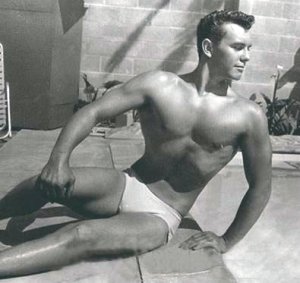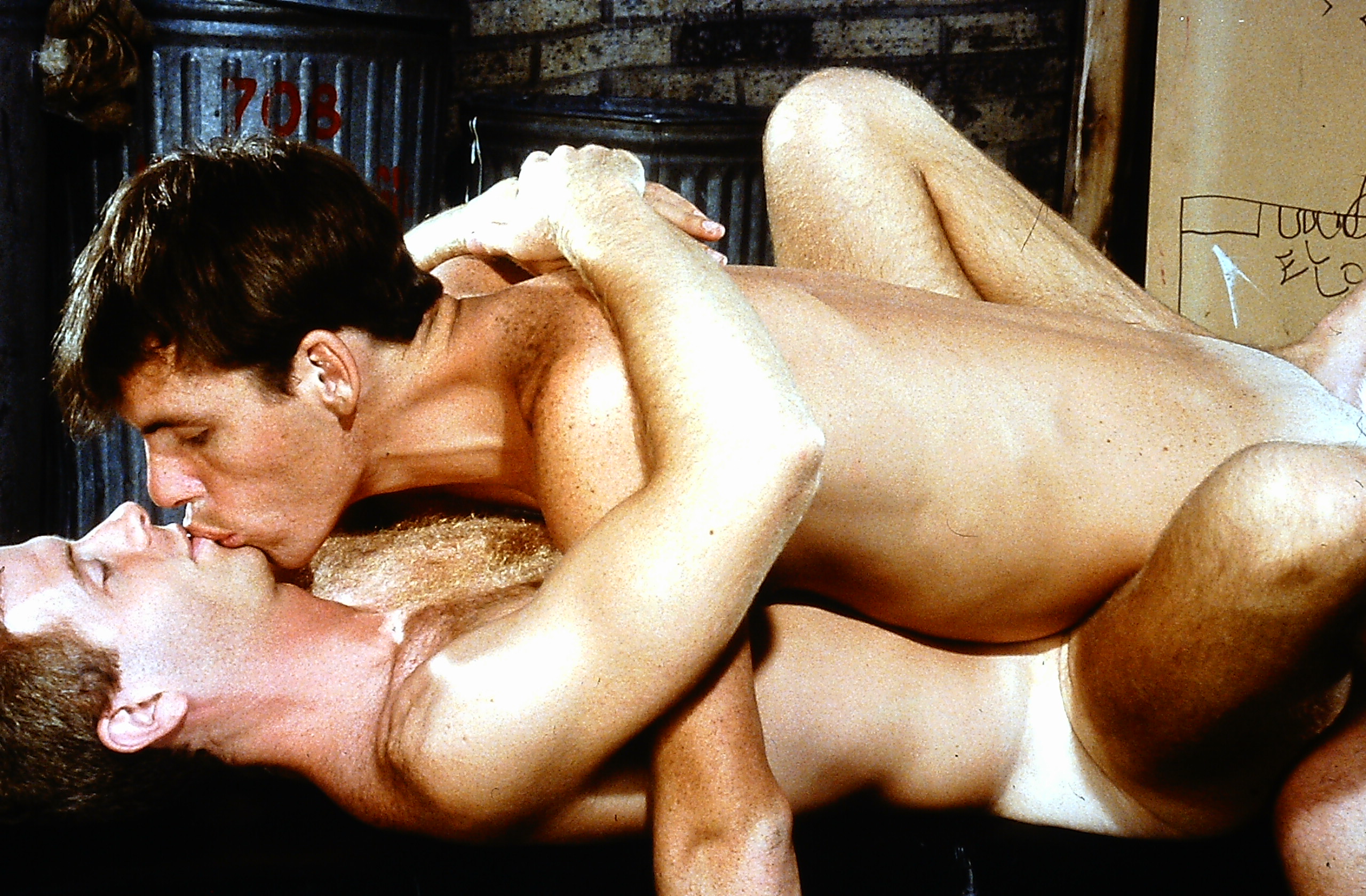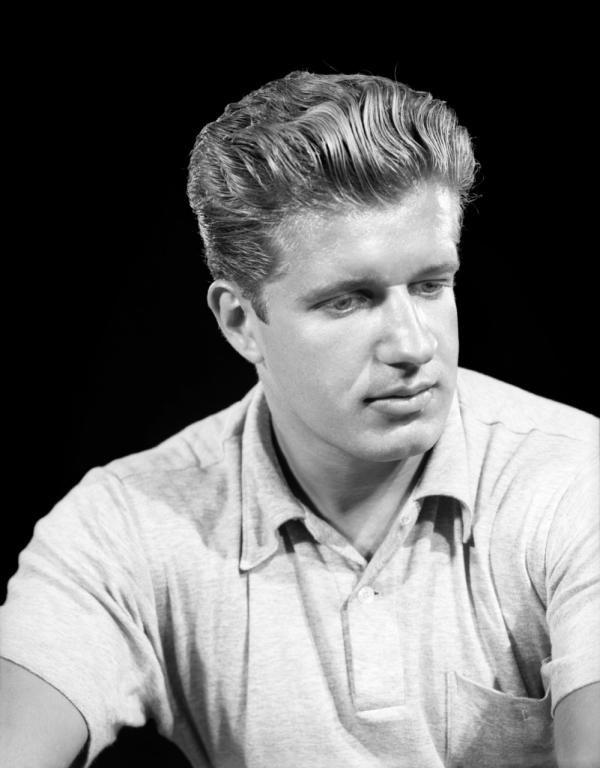Behind the Lens: The Life and Times of Bob Mizer (Part IV)
Author’s note: This is the fourth and final part of a four-part series designed to introduce the novice to photographer and filmmaker Bob Mizer. Part...
4 min read
Bob Mizer Foundation : Jan 26, 2016 5:51:00 PM

Author’s note: This is the first of a four-part series designed to introduce the novice to photographer and filmmaker Bob Mizer. We will post a new installment to this series on our blog each week for the next month. Part I will explore Mizer’s life from his childhood to 1951, the year he founded “Physique Pictorial.”
It seems only appropriate that artist and photographer Bob Mizer was born at roughly the same time as the Jazz Age.
The Roaring ‘20s, generally characterized by prosperity and rebellion against social mores, easily parallels the trajectory of Mizer’s own career – years of excess, vibrancy and art that made a seismic impact on the American cultural landscape, culminating in an end that felt as if it came before its time.
Put quite simply, Mizer was one of so many gay men who appreciated the beauty of the male form. Unlike those men, whose appreciation could never be verbalized in public without fear of being ostracized, Mizer built an entire career and an empire out of photographing models from all walks of life – traditionally handsome and average-looking, black and white, those who were polished and seemed too perfect to be mortal, and those rough trades who came from the proverbial wrong side of the tracks. He appreciated all of them, he knew his readers had tastes as diverse as the men he shot, and he dared to share his art in an era where doing so could mean time spent behind bars. Unlike the puritanical lawmakers and authoritarians who sought to keep Mizer’s photographs from circulation, Mizer saw his work as art, never as pornography. And, as awareness of his work continues to grow, it would seem the art world would agree.
Robert Henry Mizer, known to family and friends simply as ‘Bob,’ was born on March 27, 1922, in Idaho, moving to California with his family at the age of 5. From a very young age, his mother, Delia, had to have known her son was different. He wasn’t like the other boys – he was artistic. Sensitive. He even kept personal diaries. She hoped that didn’t mean homosexual.
“Even as a young teen, Bob was very forthcoming about his sexual orientation,” says Dennis Bell, the founder and president of The Bob Mizer Foundation, a nonprofit organization designed to promote and preserve Mizer’s works, as well as raise awareness of experimental photographers. “He was always open about who he was, and for the 1930s and 1940s, this was extremely brave – some would even say foolhardy. Bob was really this force that couldn’t be contained, and his dedication to photographing the male physique in its purest form is absolute evidence of that.”
Mizer’s earliest photos can be traced to 1942. Throughout the early 1940s, the young photographer stalked the sands of Muscle Beach for both male and female models. The inherent photogenic nature of his subjects made his images popular in L.A.’s muscle culture, and word about his talent spread quickly.
 Eventually, Mizer didn’t go to the beach and boardwalks to find his models – instead, he brought them to his own home, much to the dismay of his mother. But her son’s photography hobby had quickly blossomed into something that might resemble a career – and soon. She grudgingly allowed him to bring models to her parlor and shoot them in various states of undress, all the way down to a posing strap (a precursor to the modern-day g-string). Many who have written about Mizer even insist that Delia Mizer sewed the posing straps that adorned the models.
Eventually, Mizer didn’t go to the beach and boardwalks to find his models – instead, he brought them to his own home, much to the dismay of his mother. But her son’s photography hobby had quickly blossomed into something that might resemble a career – and soon. She grudgingly allowed him to bring models to her parlor and shoot them in various states of undress, all the way down to a posing strap (a precursor to the modern-day g-string). Many who have written about Mizer even insist that Delia Mizer sewed the posing straps that adorned the models.
“There isn’t any evidence that Delia Mizer actually did this,” notes a Foundation staffer, “but it’s quite fun to consider, isn’t it?”
The Mizer home, a modest house on 11th Street in Los Angeles where Delia and her son had lived since the late 1920s, became a hub of activity quickly, with models coming and going each day, most being met by harassment by Mizer’s own brother. Whatever goings-on occurred at the house, at least one part of it remained untouched throughout the years. After Mizer’s death in 1992, his room in the attic, covered wall to wall with celebrity photos and tabloid pages, sat exactly as it appeared in his teen years – a veritable time capsule of Mizer’s life as a youth.
Mizer’s hard work would pay off in 1945, the year he founded The Athletic Model Guild, a studio of his own design that, on the surface, promoted healthy living with its images of toned, muscular bodies but provided thinly-veiled vehicles of desire for the gay men who counted themselves among his clients and patrons. The Athletic Model Guild brought to life in black and white a variety of muscular beefcake models, budding celebrities and musclemen, all the embodiment of traditional masculinity, health and even possessing a hint of sensuality.
“Bob’s images weren’t explicit by any stretch of the imagination, but certainly, for the time, they were considered provocative,” Bell says. “The work he was doing was pioneering, groundbreaking, and even dangerous for the time. Bob lived in constant fear of being fined, being arrested, or worse.”
It didn’t take long for authorities, who were ready to pounce at the mere suggestion of improper conduct, to take notice of Mizer’s professional activities. In the spring of 1947, Mizer was arrested for wrongly accused of having sex with a model who was a minor. The sentence of imprisonment was swiftly brought down, and Mizer was transferred to a work camp in Saugus, California, where he remained for a year.
Instead of finding himself awash in feelings of self-pity and defeat, Mizer’s numerous letters to his mother from the camp in Saugus reveal a man who felt empowered and driven to move forward with his own work, despite knowing the eyes of the law and religious zealots were constantly upon him.
“I feel more strength now than ever before, but this strength … shall be carefully bridled and directed with wisdom,” he wrote to Delia in 1947.
Only a couple of years after his release from prison, Mizer channeled that raw energy into founding a new magazine that would bring his words and images into the mailboxes of subscribers across the country. The content of that magazine, which would be dubbed “Physique Pictorial,” would dramatically alter the path of Mizer’s career and revolutionize the field of beefcake photography. But, like his career, Mizer’s legal troubles were just beginning.
Next week – Part 2 will chronicle Mizer’s career and “Physique Pictorial” between 1951 and 1967.

Author’s note: This is the fourth and final part of a four-part series designed to introduce the novice to photographer and filmmaker Bob Mizer. Part...

Author’s note: This is the third part of a four-part series designed to introduce the novice to photographer and filmmaker Bob Mizer. We will post a...

Author’s note: This is the second part of a four-part series designed to introduce the novice to photographer and filmmaker Bob Mizer. We will post a...

The difference between a mere appreciation of a Bob Mizer model and one that catches your eye every time you see him splashed across a page is all in...